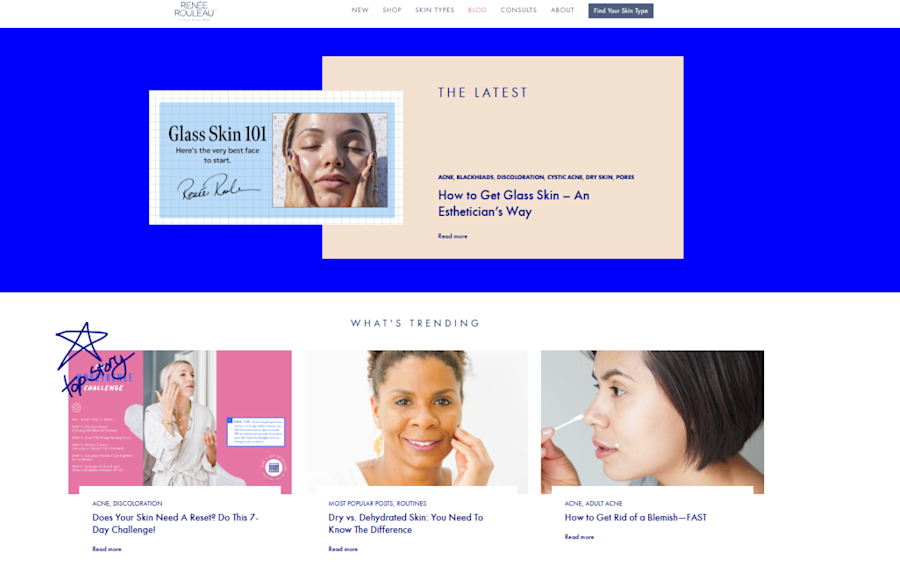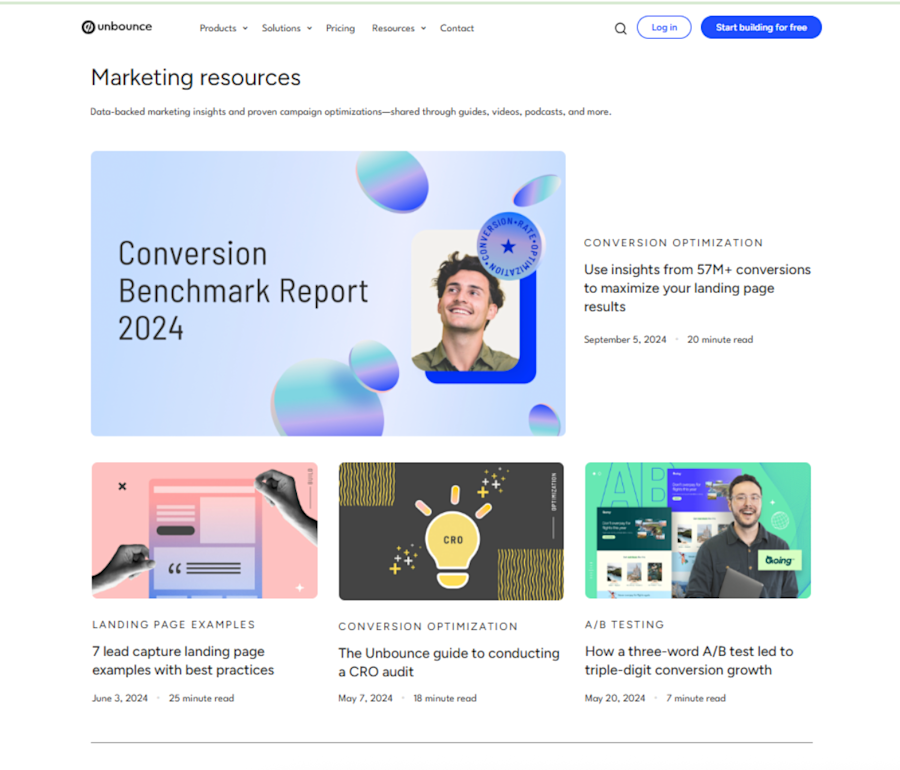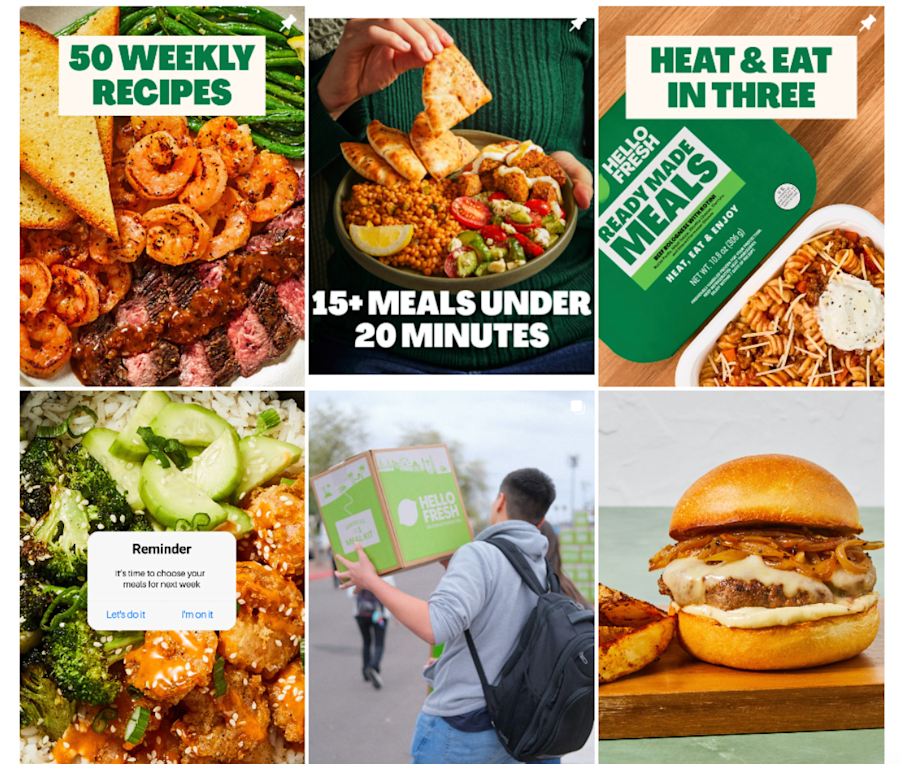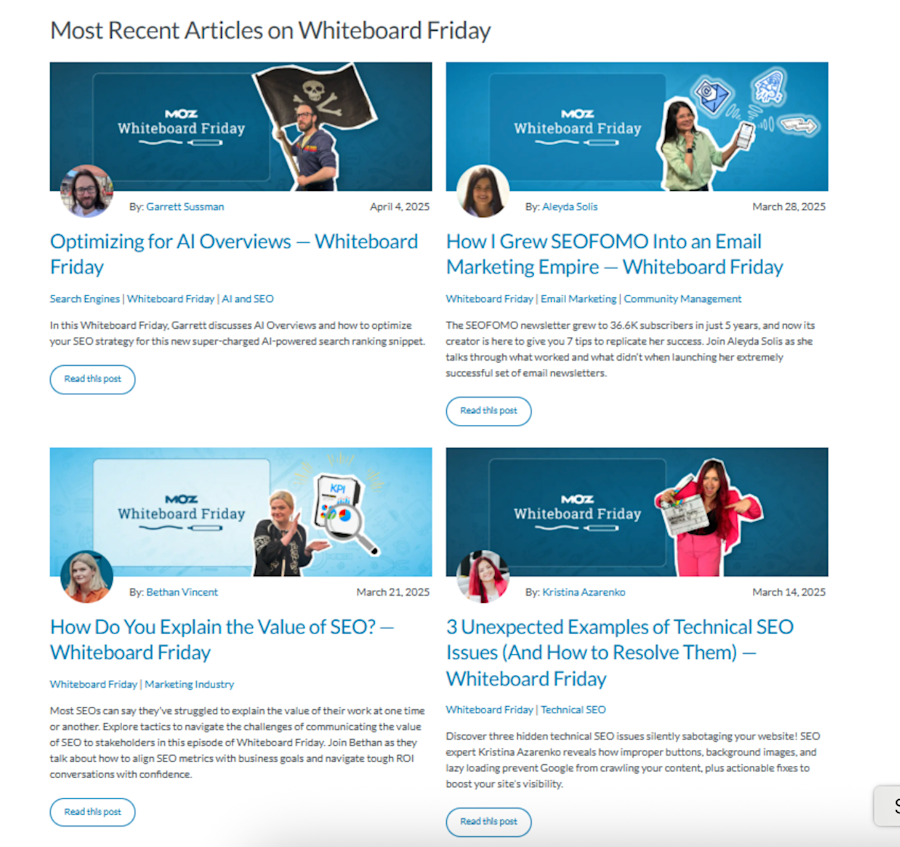Inbound marketing is a hugely effective way to drive traffic, leads, and revenue for both B2C and B2B companies.
By focusing on the needs of your ideal clients and providing the content they want to see, your business can increase brand recognition and attract high-quality, loyal leads.
In this article, we'll talk about what inbound marketing is (and what it isn't), share some strategies that work well for B2B, explore some successful inbound marketing examples, and explain how Leadfeeder can help boost your inbound marketing campaigns.
What is inbound marketing?
Inbound marketing, also called "pull marketing," attracts customers to your business by offering valuable content and resources.
Instead of using paid ads and commercials to spread awareness and reach your audience, inbound marketing means connecting with potential customers through search engine optimization (SEO, content marketing, and other inbound channels.)
The aim is to attract and engage your ideal audience with useful content that nudges them toward conversion by building credibility and trust. An effective inbound approach also ensures customers achieve success with your product, encouraging them to become advocates and repeat buyers.
Inbound vs outbound marketing
The other half of an inbound marketing definition is understanding how it relates to outbound marketing. Inbound and outbound are kind of like the yin and yang of marketing.
Here's the difference:
Inbound marketing is about drawing people into your website before making contact.
Outbound marketing is about reaching out to customers and initiating the conversation yourself.
Let's look at a few examples:
You post a blog. Customers come to your site, read your post, and maybe click on another link. You drew them in, so it's inbound marketing.
You run a direct mail campaign to a list of target accounts that you haven’t spoken with before. You reached out to them first, so it's outbound marketing.
Other examples of outbound marketing include cold calling, social media advertising, or cold emailing a list of purchased addresses (😱please don't do that.)
The role of inbound marketers
Who can use inbound marketing?
Inbound marketing can be used by any business—regardless of size or industry—to boost brand awareness, attract new customers, and build deeper relationships. The only real requirement is that your target audience is active on online channels, which is nearly guaranteed in our modern, digital era.
Plus, inbound marketing requires less upfront costs than outbound marketing approaches. This means that startups and small businesses on a budget can use lots of different inbound marketing strategies to raise brand awareness without breaking the bank.
What do inbound marketers do?
Inbound marketers specialize in organically attracting, engaging, and building relationships with customers. Their central goal is to draw customers to a business by targeting them with engaging content that entices them to stick around for the long haul.
To do this, inbound marketers use market research and analysis to identify their target audience. Along with demographics and psychographics, they aim to gain a deep understanding of their target customers’ wants, needs, pain points, and preferences. This enables them to move onto the next stage—creating content that delights and captivates these target audiences.
There are lots of different inbound marketing channels and strategies that can be used to achieve this, including:
Content marketing
SEO and search engine marketing (SEM)
Email marketing and automation
Blogging
Social media marketing
For example, an inbound marketer might create and promote blogs, articles, videos, infographics, and e-books across different online channels. Using data analytics, they’ll track the success of their campaigns and use it to make continuous improvements. And, they keep a keen finger on the pulse of key marketing trends to inform their next campaigns.
Can inbound marketers work with outbound marketers?
They might use two different marketing strategies, but inbound and outbound marketers can effectively work together to achieve their shared primary goal of attracting customers.
Integrating outbound marketing is especially beneficial in inbound marketing for B2B, where marketing funnels are longer and relationship-building is paramount.
For example, an outbound marketer might proactively reach out to potential customers via traditional advertising, cold emails, or direct mail. This fosters brand awareness so that when the prospect initiates their own research, your familiar brand name will stand out to them, encouraging them to engage with your inbound content.
Plus, outbound marketers regularly direct leads to content created by inbound marketers, expertly guiding them into the inbound marketing funnel.
Benefits of inbound marketing
Inbound marketing can be a slow burn when compared to more traditional, interruptive outbound methods. However, the advantages of inbound marketing for businesses are undeniable.
Let’s examine some of the inbound marketing benefits in more detail.
Empowering customers
An inbound approach hands the reins to potential customers and lets them control their experience. Interested leads can seek out your brand and its products of their own volition and on their preferred channels.
Delivering high-quality leads
B2b inbound leads have an active interest in your product or service. Leads arrive at your blog, landing page, or social media account through their own research and want to know more about your brand and what it offers.
Lowering marketing costs
Inbound channels are relatively cheap when compared to paid advertising and other outbound marketing channels. For a lower cost, you can expand your reach to new audiences.
Increasing ROI
Inbound marketing requires an upfront investment of resources but pays off over time. With sustainable evergreen content, one channel can pull in prospects for years.
Hubspot reports that 30% of marketers saw the best ROI from website, blog, SEO, and content marketing channels. Spending less to get higher-quality leads? What more could you want?
Improving brand perception
In general, customers don’t respond well to pushy sales tactics. Cold calling does work in certain situations, but does anyone like to be contacted that way?
Being less aggressive and giving customers more control over their sales journey builds relationships and raises your brand image.
Providing web diversification
Research shows that it takes an average customer eight touchpoints to reach conversion. Inbound marketing adds different formats and platforms to your marketing and sales pipelines. This creates more interactions and allows you to connect with new audiences.
Boost SEO
Inbound channels help raise your authority and ranking with search engine algorithms. A recent HubSpot report found that 85% of companies that use inbound marketing tactics increase traffic within seven months.
What are the limitations of inbound marketing solutions?
Inbound marketing is a powerful strategy that can boost SEO performance, increase brand awareness, and generate high-quality leads. But, like all marketing strategies, it does come with some challenges.
Here are a few limitations to note:
It can take time to see results: Inbound marketing is a long game. It can take a while to find the right cocktail of ingredients that compose high-quality content and shape an effective strategy. Plus, because inbound marketing focuses on building authentic relationships, it’s a slow-burning process.
It requires continuous effort: Customer wants, needs, and interests are constantly evolving. Inbound marketing strategies must evolve with them to ensure that they continue to resonate with audiences.
It can become overwhelming: With so many channels, tools, and strategies available, inbound marketing architecture can quickly overwhelm companies that try to do too much, hurting overall ROI.
It’s extremely competitive: Everyone wants a piece of inbound marketing. Standing out from the crowd isn’t always easy, which is why it’s so important to create hyper-targeted, high-quality content and a strong inbound marketing plan.
It can be hard to measure ROI: Strategies like paid ads and performance marketing can be clearly linked to sales, but this often isn’t the case with inbound marketing. Prospects typically interact with multiple pieces of inbound content before converting, making attribution harder if you don’t have the right tools.
The three steps for a successful inbound marketing campaign
Inbound marketing seems straightforward enough. If you build it, they will come, right?
Well, it depends on what you build and how you use it. There are three inbound marketing stages that you need to understand to ensure a successful strategy.
Attract
Inbound marketing works in nearly the opposite way to account-based marketing. Instead of focusing on specific companies to target, you create and publish content designed to encourage your target market to take a bite.
The first step is to develop ideal customer profiles (ICPs). These are detailed templates of potential companies or individuals that are a perfect fit for your product.
Keep your ICPs in mind when creating the content to publish on your blog and social media networks. Craft buying guides, how-to’s, and explainers that help prospects learn about your offerings and how they will solve their problems.
Reinforce your content with an SEO strategy. Again, build your tactics around your ICPs. If your target market is SMBs who want marketing automation, then curate your keywords, meta tags, and other elements to appeal to their searches.
As you rise up the search engine rankings, you will reach a larger audience.
Engage
Once you’ve captured an inbound lead, you need to keep them engaged. How you achieve this will depend on the source of the lead.
If a customer signs up for a newsletter, send personalized emails with useful information and enticing offers. If a user downloads an ebook, reach out to follow-up and find out what they thought about the guide.
Prospects will interact with sales and marketing materials. Use a website visitor tracking software like Leadfeeder to gain more insight into the companies that view your website. Use a lead scoring system to help your team further qualify leads and prioritize outreach on those most likely to convert.
Build real connections founded on authenticity and trust. If you do that, it’s only a matter of time before prospects move closer to making a purchase.
Delight
Customer relationships develop naturally when you can delight prospects. Prove the worth of your solution and make them happy during and after their sales journey.
Host these onboarding resources, such as welcome packs or video tutorials, on your website as part of the comprehensive knowledge base and send these to new users by email.
Use customer satisfaction (CSAT) surveys to get feedback on your products, customer service and support, and sales process. Show customers you’ve taken their feedback on board by making improvements. Shout about this on social media platforms and your website.
Implement social media listening tools to keep track of your mentions. Keep prospects and customers engaged by always responding to comments and likes. You can also use direct messages on social media as an additional customer support tool.
Go above and beyond to delight your customers. If you do, they’ll reward you as brand advocates who direct more interested leads to your inbound channels.
B2B inbound marketing tactics to drive revenue, not just leads
Building an inbound marketing strategy for B2B is a little different than B2C. You can't slap up a few blogs and call it a day.
All the inbound marketing tips, guides, and tools out there can get a little overwhelming. Don’t worry—we’re just sharing the four key inbound marketing techniques that the Leadfeeder team leveraged to grow from a three-person team to a leading B2B business intelligence data company.
1) Write more blogs. But also better blogs.
Some B2B companies assume that people don’t want to read blog posts about specialized technical or industrial products.
While they’re right that not everyone will want to read these, your customers should be looking for the solution you provide for a problem they need solving.
Is their current provider going under? Have prices skyrocketed? Are a large portion of the tools they currently use damaged?
You could write blogs about why prices are going up, how some cost cutting measures can be dangerous, or how testing packaging methods resulted in a 25% decrease in damaged parts.
Other topics that even the most "boring" companies could write about include:
Health and safety information
Industry news and updates
Reviews of the best/worst products related to your industry (these don't have to be products you sell)
Hiring or managing best practices in your industry
Case studies showing how you've helped other companies succeed
Remember, the point is to offer value, not make a sale. Don't aim to convert on a customer's first interaction.
2) Get active on social media
If you're in B2B, TikTok might not be your jam, but, with more than 5.24 billion users worldwide, social media is an undeniable sales resource.
Your audience is on social media somewhere—you just have to find them.
Get granular about your ICP and see where they hang out. It might be LinkedIn, Reddit, or even Facebook.
When you post, focus on offering value. What can you do for them? Can you be funny like Semrush?

Semrush sells analytics software—but they know their clients are mostly digital marketers who struggle with clients with grandiose expectations, so this post hits home.
Inbound marketing isn't about selling, so feel free to be funny and let your corporate hair down a little if it makes sense for your brand.
3) Build an email list
Your email list is one of your most powerful B2B marketing assets. That's because these are people who work for companies that are likely to be interested in what you offer—and they actually want you to reach out!
Capturing email addresses starts by offering something of value, such as:
Long-form guides, like white papers or books
Tools or templates, like our cost per lead calculator
Webinars
Chatbots that answer FAQs or direct them to resources (these can qualify leads, too 🙌)
Once you build an email list, you can segment it by where they are in the funnel, buyer persona, ideal customer profile, or the type of content they're interested in.
4) Optimize your website for search
SEO is invaluable to inbound marketing.
It's all about making sure your website shows up in search results for the keywords your audience is likely to search for.
While it's too complicated to outline all the things you need to do for B2B SEO, here's a few tips to get you started:
Research the keywords your audience uses the most often. Tools like Semrush and Google's Keyword Planner offer limited data for free. There's also a number of paid keyword research tools.
Include those keywords in headings, URLs, and navigation bars where it makes sense. If you don't have blogs targeting those keywords, that's the next step!
Check your site speed: Nearly 70% of consumers say site speed impacts their purchase decisions—and it's a major Google ranking factor. Luckily, Google has a free tool so you can see where you stand.
Use a technical SEO checklist to make sure your backend isn't causing issues. This includes making sure you have a sitemap, use HTTPS, and implement Schema where it makes sense.
Blogging can also help with SEO, so make sure content marketing is part of your inbound marketing process.
Real-world inbound marketing examples
Lots of companies are successfully using inbound marketing to meet their goals, but some stand out from the crowd. We’re going to dive into some real-world B2c and B2B examples to explore how the best players in the game are seeing results from their inbound marketing plans.
Renée Rouleau - blog

Screenshot taken from Renée Rouleau’s blog
Renée Rouleau’s is a perfect example of inbound marketing through blog posts. Written by expert estheticians, the blog posts cover a range of skincare topics to educate and engage readers. Each blog post will internally link to related content and relevant Renée Rouleau products to seamlessly guide readers down the buying journey.
Unbounce - content marketing

Unbounce cleverly offers a wealth of free resources to draw in new leads and nurture B2B relationships. Their content library includes free ebooks, podcasts, courses, infographics, videos, and much more, with some content only accessible in full if you sign up for their email list.
What makes this so compelling is that the landing page content clearly communicates the rich value that these free resources offer. This tempts prospects deeper down the inbound marketing funnel, where they use this inbound content to inform their purchasing decisions.
Hellofresh - social media

Hellofresh expertly uses social media platforms like Instagram and Facebook to build brand awareness. From mouthwatering culinary images to how-to tutorial cooking videos, Hellofresh delivers fresh, consistent visual content to entice new leads and keep customers engaged with their brand.
Hellofresh has especially mastered the art of Instagram reels. They regularly post short, engaging videos that include on-trend cultural references to grab the audience’s attention and boost engagement. It’s much more cost-effective than paid advertisements.
Moz - videos

Moz’s “Whiteboard Friday” series uses videos to condense long-form information into easily digestible content. Their free weekly videos delve into all kinds of SEO topics and strategies, from keyword research and link building to data analytics and SEO forecasting.
With such a diverse range of video content, Moz attracts potential customers across all levels of expertise who are looking to up their SEO game. Their videos are expertly informational as well as super consistent, friendly, and engaging, establishing Moz as a trustworthy SEO authority and, in turn, encouraging leads to try out their paid products.
What are the benefits of inbound marketing automation?
Did you know that you can automate everything from lead nurturing and email marketing to data analysis?
Inbound marketing automation involves using specialized inbound marketing tools and software to streamline workflows and optimize strategies. It does more than just automate those repetitive manual tasks—it delivers critical data straight to your screen to help you enhance and optimize strategies.
Let’s take a look at a few of the main benefits of inbound marketing automation.
Increases efficiency and productivity
Instead of manually publishing content, marketers can set publishing schedules for lead-nurturing email campaigns, blog posts, social media posts, and more. This improves consistency and reliability (which is crucial for engaging customers) while freeing up marketers’ time to focus on more strategic tasks.
Enables automated lead generation
If a website visitor lands on your site but doesn’t fill out a form, they could be lost forever. Automation tools like Leadfeeder can tell you which companies visit your website, along with contact details and key firmographics that give you insight into what the prospect might need.
Armed with this info, you can follow up with targeted, personalized outreach messages that direct prospects back to your inbound content, re-enaging leads and boosting conversion potential. This is a perfect example of inbound and outbound marketing working together to meet shared goals.
Upgrades strategies for lead nurturing
Automating engagement allows you to meet customers with relevant content at exactly the right time. For example, you can nurture leads by creating an email campaign that automatically sends customers targeted emails based on an action they’ve taken, such as browsing a specific webpage. Or, you could schedule drip campaigns to welcome new subscribers and introduce them to your brand and content.
Enhances personalization
Not only does automation give you more time to create personalized content, but it delivers the data you need to make sure you’re doing it right. Tools can collect data about a lead’s browsing habits, behaviors, interests, and more, helping you develop valuable, tailored content that aligns with their specific interests and preferences.
Improves lead scoring
Inbound marketing tools can automatically score and qualify leads as they enter and progress through your inbound marketing funnel. This empowers marketers to prioritize leads based on their engagement and how likely they are to convert, leading to more targeted messages and increased conversions.
Boosts ROI
Automation tools can also track, analyze, and report on the performance of your inbound marketing campaigns. They provide detailed, accurate analytics, such as click-through rates, website traffic, engagement metrics, lead maturity, conversion rates, and customer acquisition costs. This data illuminates campaign success and potential areas for improvement, helping you develop better strategies to boost ROI.
Three ways Leadfeeder can help drive your inbound marketing strategy
All the best inbound marketing strategies start with data—and that's just what Leadfeeder delivers.
Here are three ways you can leverage the buyer data and insights that Leadfeeder delivers to build and test your inbound marketing strategy.
1) Identify website visitors even if they don't fill out a form
Does inbound marketing make you want to bang your head on your desk?
There's a good chance it's because you don't know which of your inbound marketing strategies are actually working.
Here's the thing—not every lead that visits your site will fill out a form, sign up for your email list, or reach out to sales.
So, how do you know if your inbound marketing system is a success?
Simply install Leadfeeder on your site, sit back, and relax.
Leadfeeder tracks the companies that are visiting your site, along with the pages they are viewing and the content, campaign, or channel they followed to arrive there.
We'll also show you:
Company data, like location, website, industry, and company size
Lead quality
How many visitors came to your site
When they last visited your site
The best person to reach out to at that company
Plus, you'll see their onsite activity, such as if they came via an email campaign, what pages they visited, how many pages they visited, and the total time visited.
If you've been struggling to see the fruits of your inbound labor, this is the solution.
2) Track which emails drive traffic using Leadfeeder's acquisitions filter
With Leadfeeder’s acquisitions filter, you can easily identify which of your email campaigns are driving traffic to your site.
Click + Create Custom Feed, then choose Acquisitions from the drop-down menu.

From there, you can choose to track by campaign, UTM, referring URL, or source. Choose the one that fits your current strategy, then click Add.
You'll now be able to see which leads came to your site from specific inbound email campaigns. You can then choose to sort leads further based on company size, behavior, etc.
Pro tip: You can do this for other inbound efforts as well, such as social media.
3) See what type of blog content drives the most deals
Using a similar filter, you can see which leads visit specific content and use that to power your blogging strategy.
Just like before, you'll tap +Create a Custom Feed, then select Behavior. After "is", add the URL you want to track.
You'll now be able to view a list of all the companies that visited that URL. Do they match your ICP? Have they converted?
Leverage that data to create better blog content.
For example, if your biggest clients all read content on a similar topic, you should probably write more about that topic!
Give your inbound marketing strategy a boost with Leadfeeder
Inbound marketing is clearly a lead-generating strategy that you can’t afford to ignore. But, if you’re struggling to prove the ROI of your inbound marketing campaign, Leadfeeder can help.
With our website visitor tracking tool, you can easily track who is visiting your site—even if they don't fill out a form, drop their name, or sign up for an email list. When combined with the true compliance of Dealfront’s integrated suite of sales and marketing SaaS products, you’ll have everything you need to find, connect with, and secure the high-quality leads of your dreams.
Sign up for a free two-week trial of Leadfeeder and give your inbound marketing strategy a boost today.
Inbound marketing FAQs
Why is goal setting important to inbound marketing?
Setting goals is important to inbound marketing because it helps focus your efforts. It ensures your sales and marketing teams are aligned when handling leads from disparate channels, such as SEO or social media.
Goals also help you have targets for each new lead and track the effectiveness of your marketing strategy.
What are the most common types of inbound marketing?
The most common types of inbound marketing provide useful, relevant content and include:
Blog posts
White papers
Ebooks
Landing pages
Infographics
Webinars
Social media content
Search engine optimization (SEO)
Videos
What do you need to start inbound marketing?
To start inbound marketing, you need to create content targeted to your ideal customer profiles (ICPs). Create SEO content for your website, blog, and social media channels. Next, use website visitor tracking software and other tools to collect lead information.
You can then score your leads according to your ICP and prioritize the best prospects. Your team also needs to develop ways to engage and delight your customers, such as product demonstrations and customer feedback forms.
How often should you publish content for inbound marketing?
Inbound marketing works best when you post content regularly. It’s also a slow build, so you can gradually ramp up frequency as channels gain momentum. Hubspot recommends starting off with six to eight posts per month. If you sell in a technical niche, it’s better to focus on two to four in-depth articles on complex topics.
Now that you're here
Leadfeeder is a tool that shows you companies that visit your website. Leadfeeder generates new leads, offers insight on your customers and can help you increase your marketing ROI.
If you liked this blog post, you'll probably love Leadfeeder, too.
Sign up




